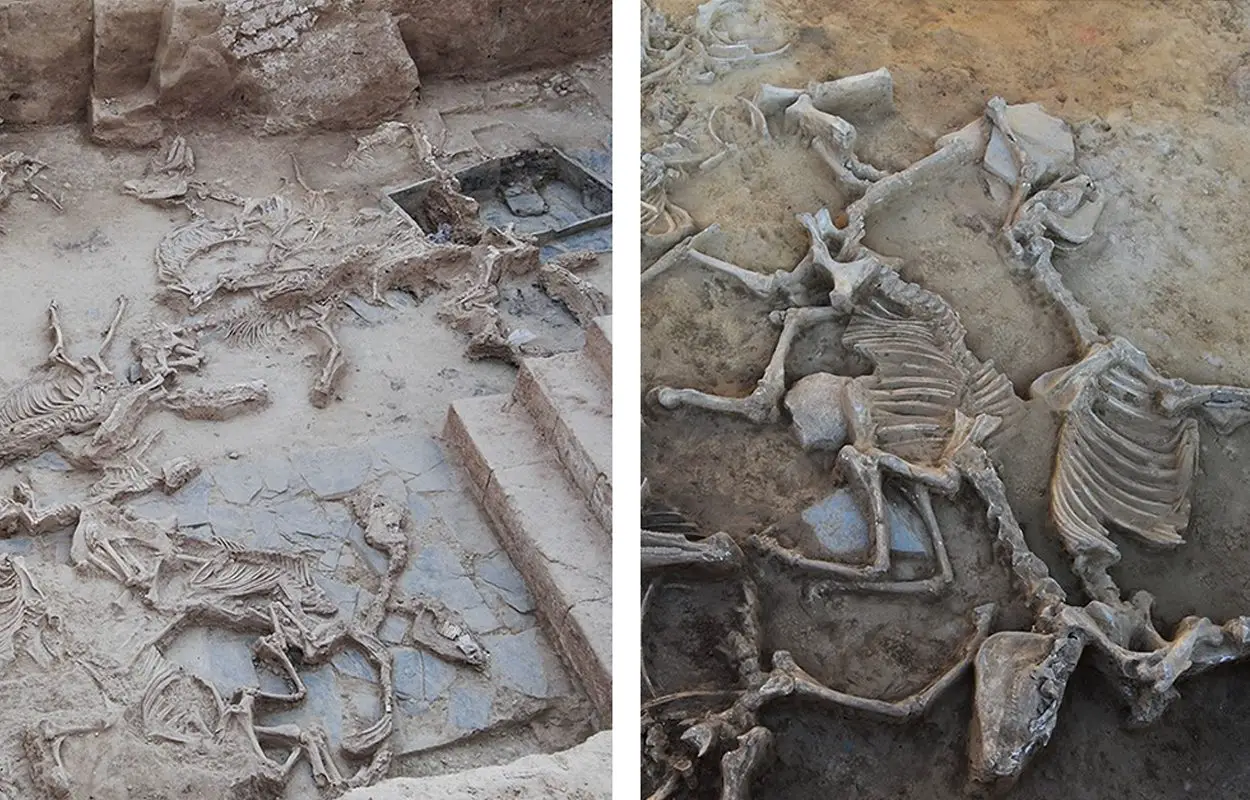A study published in the journal PLOS ONE reveals that the Iron Age site of Casas del Turuñuelo was used for large scale animal sacrifices and banquets.
Casas del Turuñuelo is an archaeological site associated with the Tartessos culture, a people that emerged from the evolution of local populations inherited from the Bronze Age in the southwest Iberian Peninsula.
The study examined and dated 6770 bones from 52 sacrificed animals, including a large proportion of adult horses – alongside cattle, pigs, and a lone dog.
All the sacrifices were done in three successive phases, with the early phases featuring mostly intact, unaltered skeletons, while the third phase exhibited processed skeletons (excluding equids), suggesting a potential meal accompanying the ritual.
The sacrifices were found in a building dated to the end of the 5th century BC, when both the building (intentionally destroyed) and the sacrificed animals were buried under a 6 metre tall tumulus.
The study sheds light on the sequence of animal sacrifices and the protocols associated with rituals accompanied by celebratory banquets. Specific characteristics linked to the closure of this structure beneath a burial mound provide indications of the decline of the Tartessian Culture.
According to the researchers, these findings imply repeated usage of this space over several years for diverse sacrificial practices, and deliberate selection of adult animals. Casas del Turuñuelo distinguishes itself from other sites due to its notably high number of sacrificed horses, contributing to a better understanding of ritual animal sacrifices in Europe during the Iron Age.
The authors underscored the significance of their study, stating, “This investigation emphasises the role of mass animal sacrifices within Iron Age European societies. Through zooarchaeological, taphonomic, and microstratigraphic analyses, it illuminates the practices of animal sacrifice and Tartessian ritual behaviour at Casas del Turuñuelo (Badajoz, Spain).”
Header Image Credit : Construyendo Tarteso, CC-BY 4.0







